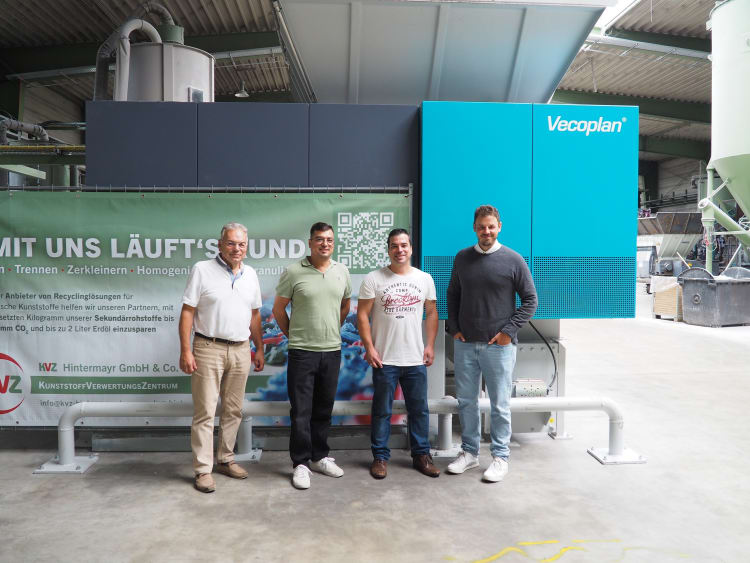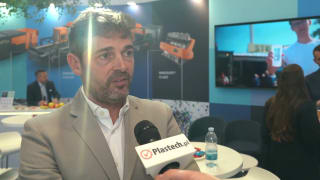
KVZ Hintermayr runs recycling operations focused on challenging plastic waste fractions, including molded parts, sprues/runners, foams, films and nonwovens, as well as composite materials and streams partially contaminated with metal or paper inclusions. The company produces nearly 6,000 tonnes of regrind and regranulate annually, selling secondary raw materials primarily to Germany and neighboring countries. To maintain high process flexibility, the company invested in shredding with a broader application range. At IFAT 2024, the Hintermayr brothers identified a solution for the new extrusion line, selecting the Vecoplan VIZ 1700 shredder. The machine is intended to address variability in input streams, reduce downtime and lower energy costs. The system was delivered in December 2024, and after line start-up the unit has been operating in three-shift mode. The choice was preceded by trials at the manufacturer’s technical center, which confirmed the required flexibility and process stability across different materials.
The family business KVZ Hintermayr grew out of a livestock farm operated since the 1980s. After the beef market crisis and the BSE outbreak, the cowshed was converted into a hall with the first shredder and a granulator. Since 2008, the Wertingen site with two extrusion lines has been developed in parallel. Before extrusion, material is shredded and homogenized to improve melt parameter repeatability. Previously, a single-shaft shredder with a granulator was used for films and light EPP, and another shredder type for rigid plastics and EPS. The current goal was to integrate feedstock preparation upstream of the new extruder while maintaining high line quality and availability.
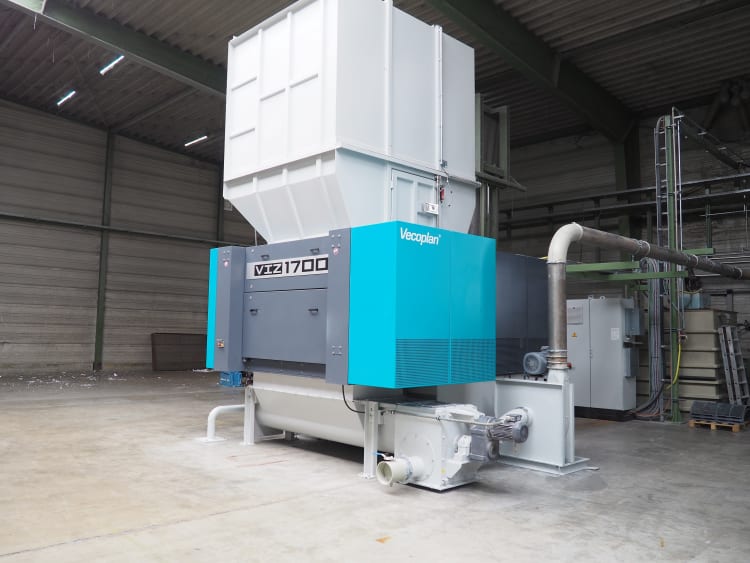
Material range and process requirements
Input streams include both compact, rigid parts and light, high-volume items. Some materials are thermoplastics modified with fillers or permanently bonded with other raw materials. KVZ Hintermayr’s customers include film manufacturers and injection molders that recover their own production waste in a closed-loop model. Recycling also covers composite products with higher demands on feed preparation for downstream processing.
- molded parts and sprues/runners
- foams and EPS
- films and nonwovens
- post-production waste in lump form
- filled composite materials
Feedstock is delivered to the shredder using a telehandler. The large cutting chamber and rotor geometry are intended to produce a homogeneous mix, which is then conveyed via a screw conveyor and a suction blower to a silo, and from there to the extruder. As KVZ Hintermayr notes, the VIZ 1700 combines features of a single-shaft shredder and a granulator, expanding the range of possible applications with a single feed preparation line.
According to the manufacturer, depending on operating conditions for this application the maximum throughput of the VIZ is 2,000 kg. Flexible cutting geometry and the selection of rotor tooling, knives and screens allow parameters to be adapted to material requirements and the desired quality of the output fraction. Precise settings in the cutting zone enable control of throughput and shredding characteristics.
Drive and automation
The shredder is equipped with a HiTorc drive with high starting and operating torque. By eliminating mechanical elements such as belt or gear transmissions, flywheels and couplings, the manufacturer indicates a potential throughput increase of up to 25 percent. Compared to conventional electromechanical drives, this solution is said to reduce energy consumption by up to 40 percent, and compared to hydraulic drives by up to 60 percent. In practice, this helps lower electricity costs and associated CO2 emissions.
KVZ Hintermayr points to stepless speed control, which allows adaptation to different input materials, for example slower for EPS bales and faster for filaments. If foreign objects are present, a shock sensor is designed to respond immediately, reducing the risk of consequential damage. A hydraulically pivoting bottom flap facilitates maintenance, and the cutting gap is adjusted from outside the machine.
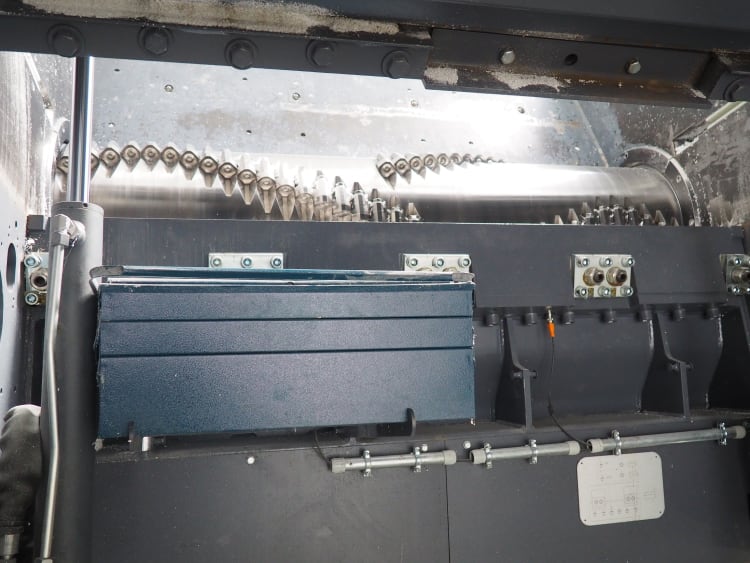
As users emphasize, the V-shaped rotor arrangement supports reliable start-up and reduces the number of downtimes and unnecessary emptying. The operator can change many parameters and save them as process recipes, which facilitates changeovers between different material streams.
The unit is supplied as standard with the Vecoplan Smart Center digital system. The VSC.control interface serves as the operator panel and connects the machine to the manufacturer’s services. Via VSC.connect, remote service functions, key indicators and a library of training materials, including tutorials, are available. A camera installed in the housing enables remote monitoring of critical zones, for example from a tablet.
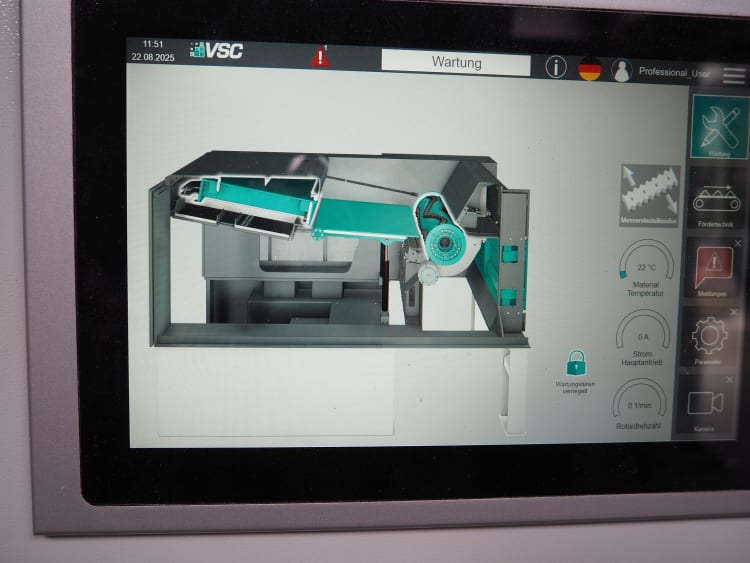
Operation and line integration
In Wertingen, the shredder feeds a unified input stream to the silo and then to the latest extruder. A hydraulic linear pusher forces material into the rotor working area fully automatically and load-dependently, and its operation can be individually programmed on request. The inclined pusher position and the very slowly rotating rotor facilitate effective chamber emptying, shortening material changeover times.
"We recycle what many others cannot," says Franz-Xaver Hintermayr. "The new VIZ responds very flexibly to the wide variety of materials, and reliability is crucial for us because a failure stops the entire line." "Thanks to the ability to finely adjust rotational speed, the drive can be smoothly adapted to the optimal operating speed for different input materials," he adds. Veit-Kilian Hintermayr highlights the ability to change parameters independently and create recipes, which simplifies day-to-day operation.
"With Vecoplan we have a partner we can rely on even in complex situations," concludes Franz-Xaver Hintermayr. After commissioning the new line, the shredder has been running continuously in three-shift operation, supporting stable regranulate production.
